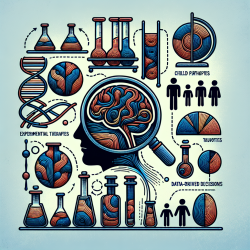Understanding the Impact of Bullying and Substance Use on Adolescent Injuries
In the realm of adolescent health, serious injuries are a significant yet often overlooked issue. The study titled "Prevalence and socio-demographic correlates for serious injury among adolescents participating in the Djibouti 2007 Global School-based Health Survey" sheds light on this pressing concern. This research, conducted by Muula, Siziya, and Rudatsikira, explores the prevalence of serious injuries among adolescents and the socio-demographic factors associated with these injuries.
Key Findings from the Djibouti 2007 Global School-based Health Survey
The study analyzed data from 1,777 adolescents, revealing that 61.1% of participants reported sustaining serious injuries in the past year. Notably, the study identified significant associations between serious injuries and factors such as bullying, substance use, and physical fighting.
- Adolescents who were bullied 3-9 days per month were significantly more likely to sustain serious injuries. The adjusted odds ratios (AOR) were 1.27 for 3-5 days and 3.19 for 6-9 days of bullying.
- Engagement in physical fighting increased the likelihood of serious injury by 47% (AOR = 1.47).
- Substance use (cigarettes, tobacco, or drugs) was associated with a 30% higher likelihood of sustaining serious injuries (AOR = 1.30).
Implications for Practitioners
For practitioners working with adolescents, these findings underscore the importance of a comprehensive approach to injury prevention. Here are some actionable steps practitioners can take:
- Explore the Psycho-Social Environment: When attending to injured adolescents, delve into their psycho-social context. Understanding factors like bullying, substance use, and family dynamics can provide insights into the root causes of injuries.
- Implement Prevention Programs: Develop and implement programs focused on reducing bullying and substance use. These programs can significantly impact the reduction of serious injuries among adolescents.
- Encourage Further Research: The study highlights the need for longitudinal research to assess the impact of reducing bullying and substance use on injury rates. Practitioners can advocate for and participate in such studies to contribute to the body of knowledge in this area.
Conclusion
The research conducted in Djibouti provides valuable insights into the factors contributing to serious injuries among adolescents. By addressing issues such as bullying and substance use, practitioners can play a crucial role in reducing injury rates and improving outcomes for young people. For those interested in delving deeper into this research, the original paper can be accessed here: Prevalence and socio-demographic correlates for serious injury among adolescents participating in the Djibouti 2007 Global School-based Health Survey.










